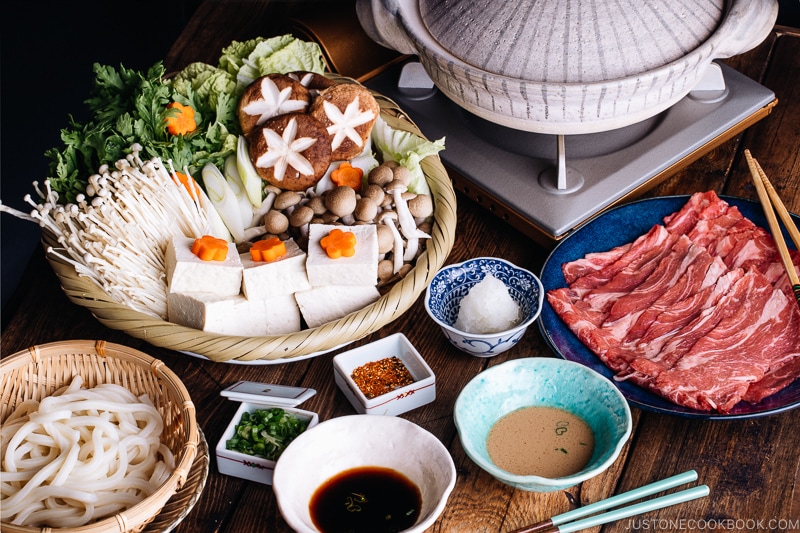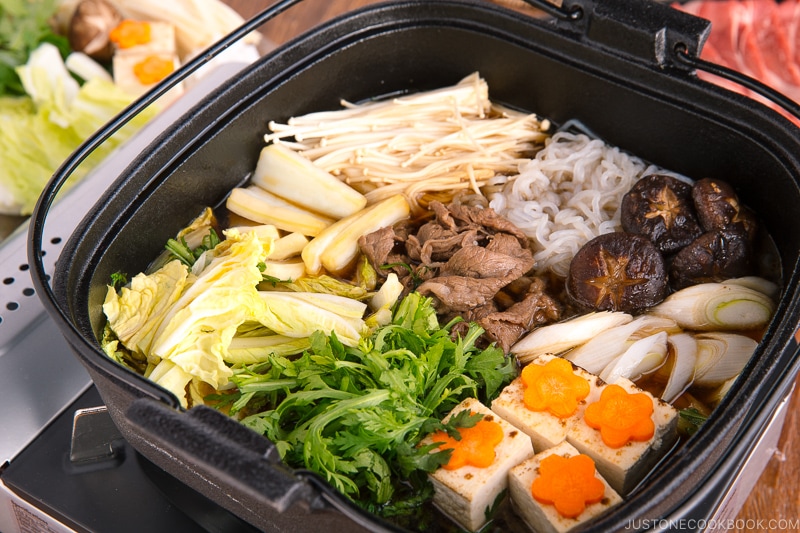A grassy and mildly bitter green vegetable, shungiku, or chrysanthemum greens are eaten raw or cooked in salads, soups, stews, and hot pot dishes. It has a distinctive aroma with high nutritional content.
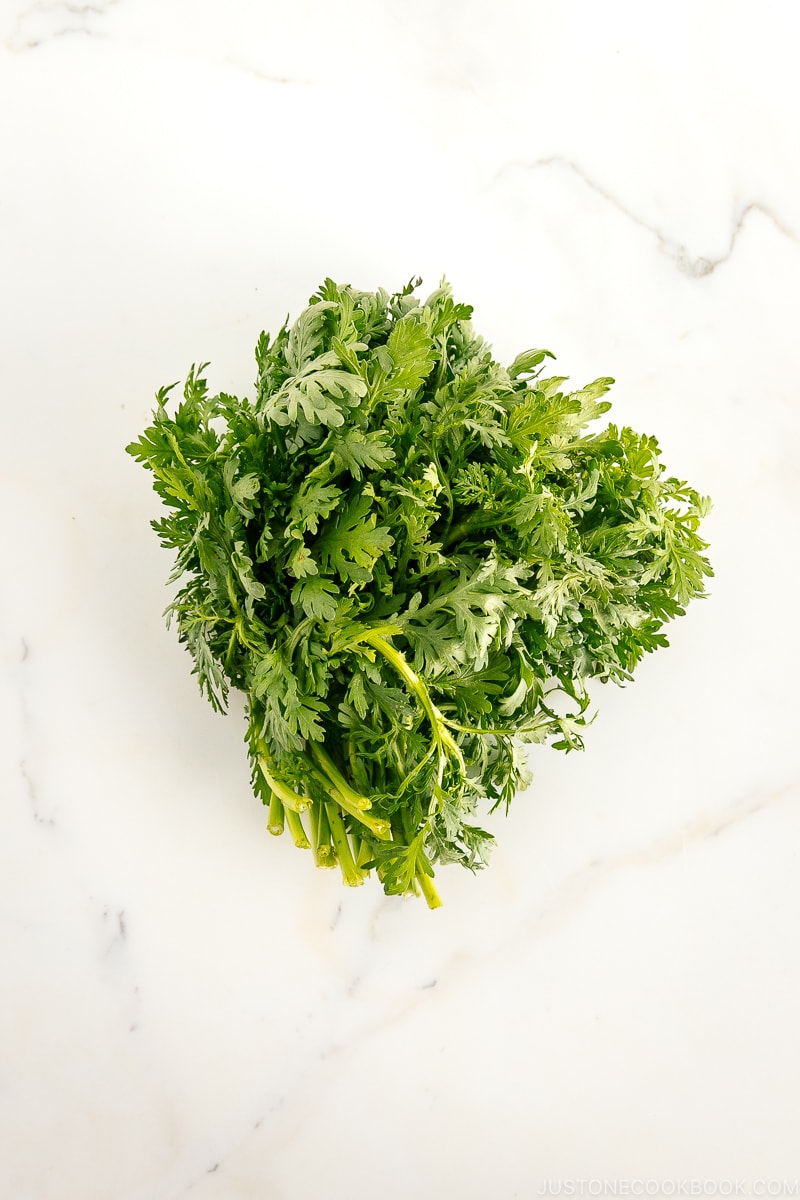
Eaten across East Asia, Shungiku (春菊, “spring chrysanthemum”) are aromatic bitter greens. The green leaves can be broad-leaf or narrow-leaf with serrated edges attached to a fibrous stem. They are an excellent source of potassium, fiber, vitamins A and C, calcium, and flavonoids. You can eat it raw or blanched in salads or add it to stir-fries and soups.
Table of contents
What Is Shungiku (Chrysanthemum Greens)
Shungiku (lebionis coronaria) is grown and eaten in East Asian cuisine. In Mediterranean countries where shungiku originated, it is cultivated as an ornamental plant. It supposedly arrived in Japan during the Muromachi period (1336-1573) through trade with China and was cultivated during the Edo period.
Its name, “spring chrysanthemum,” stems from the fact that the blossoms bloom in the spring, compared to regular chrysanthemums, which blossom in autumn. It’s in season between November and February when the young leaves are most tender and aromatic. You can also use the edible flowers as garnishes in salads.
This leafy green is called Shungiku (春菊) in eastern Japan and Kikuna (菊菜) in western Japan. Other names for these Asian greens include tong ho, garland chrysanthemum, chrysanthemum leaves/greens, edible chrysanthemum, Crown daisy, and Chop Suey greens.
What Does It Taste Like
Chrysanthemum greens have a mildly grassy and herbaceous flavor with a slightly astringent taste. The stalks are sweet and slightly crunchy.
How To Use
Cut off the stiff stems. Boil the bunch in plenty of water for about 30 seconds, immediately shock in cold water, and squeeze out excess water. If using it in soups and hot pots, add it at the end of cooking and avoid overcooking, as the bitter flavors can overwhelm the palate. You could also eat it raw, deep fry in tempura, or make goma-ae.
For the Japanese, it’s an essential component of sukiyaki and shabu-shabu.
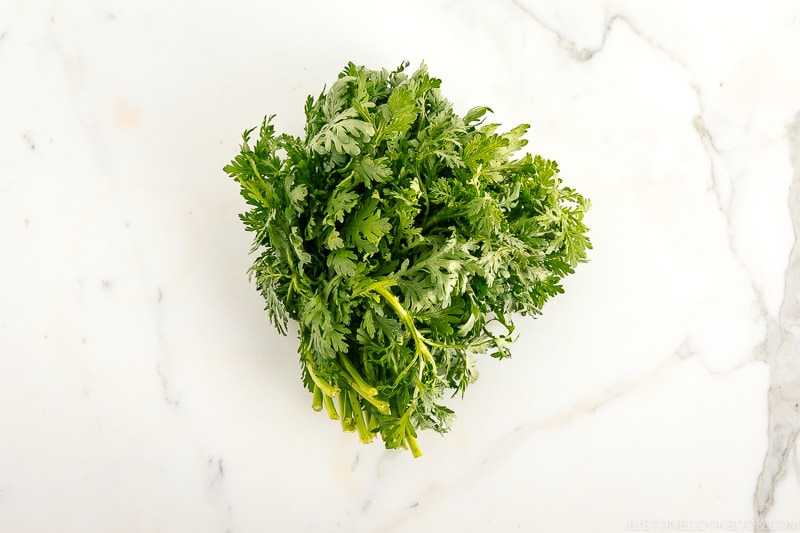
Recipes Using Shungiku
Shungiku is a common ingredient for Japanese hot pot (nabemono 鍋物) and salad (aemono 和物).
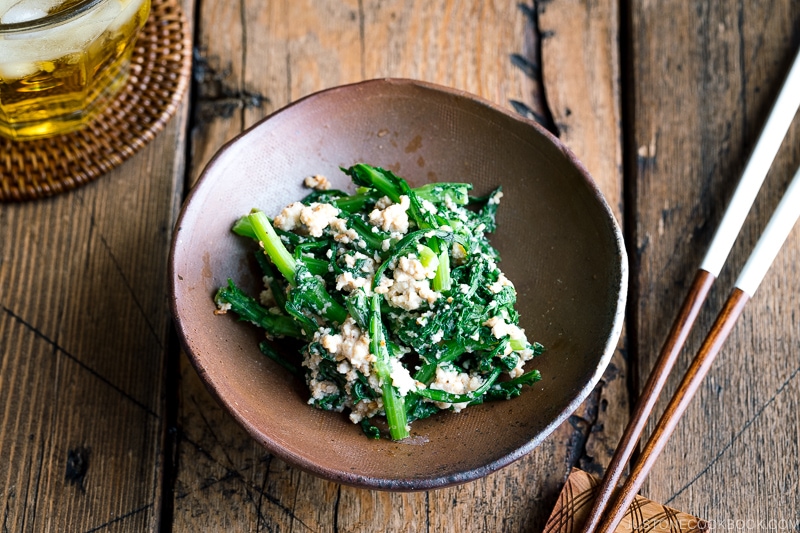
How To Choose The Best
Choose shungiku that are dark green, bright, and shiny, and ensure that the leaf tips are fresh. Avoid those with yellowing and darkening leaves.
If it has stems, choose those with thin stems, which are softer and easier to eat. If the leaves are deep and sharp, the taste is more robust. Rounded leaves are milder in taste.
How to Store
Wrap the greens in damp paper towels to prevent them from drying. Put the bunch in a plastic bag and store it in the crisper.
You can freeze shungiku by cutting the bunch into manageable pieces, wrapping them in plastic, and putting them in a freezer bag. Directly add the frozen shungiku to hot pots, soups, or stir-fries.
Growing Shungiku
You can also grow the chrysanthemum plant in your garden or container! It’s a hardy crop that prefers mild climates and well-draining soil. Be wary of common pests, such as aphids, slugs, and snails. To harvest, cut off the stems at the base with a pair of scissors. Wash off the dirt and debris before use.
Substitution
Substitute with other bitter greens such as spinach, watercress, or arugula.
Health Benefits
The greens are rich in vitamin C, calcium, iron, carotene, flavonoids, and potassium. Some beneficial effects include weight loss, maintaining skin and mucous membrane health, reducing the risk of lung cancer, and protection against cardiovascular problems, kidney stones, cellulite, bloating, and bone loss.
It contains more beta-carotene than spinach and other winter leafy greens. Beta-carotene helps control the function of free radicals, provides protection against cancer, and has an anti-aging effect.
The distinctive aroma promotes the proper functioning of the stomach and intestines, resulting in better digestion and nutrient absorption. It can also help stop excess mucus production and control coughing.
However, if you’re allergic to daisies or ragweed, you might also be allergic to shungiku.
Wish to learn more about Japanese cooking? Sign up for our free newsletter to receive cooking tips & recipe updates! And stay in touch with me on Facebook, Pinterest, YouTube, and Instagram.
